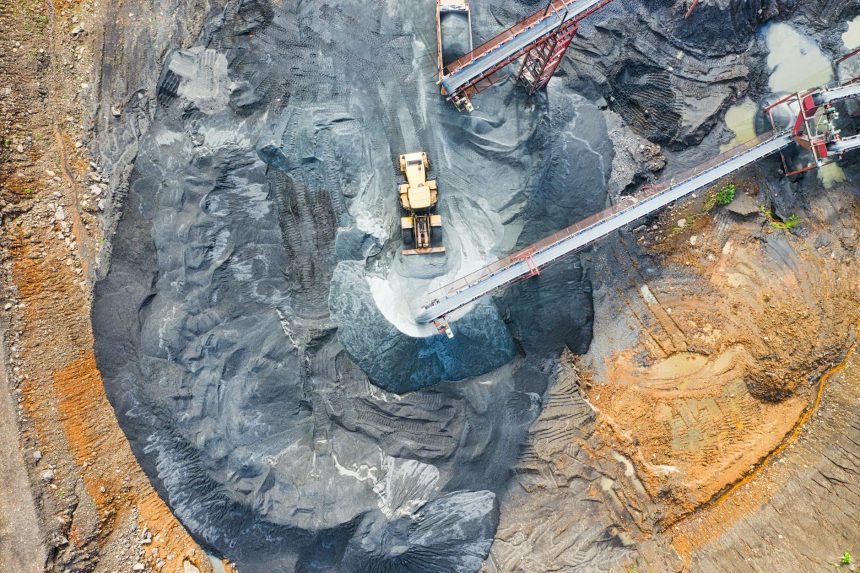battery-technology
Battery Technology: 7 Key Strategies for US Global Leadership
The global landscape is shifting, with critical raw materials and advanced manufacturing capabilities increasingly becoming geopolitical leverage. A prime example is the growing dominance of certain nations over rare-earth minerals and advanced battery technology. This concentration presents significant challenges for economic stability and national security, especially as the world accelerates towards electrification. How can leading nations, like the United States, effectively counter this dependency and reclaim a leadership position in this indispensable sector?
The Global Race for Battery Technology Leadership
The race for supremacy in battery technology is not just about manufacturing; it encompasses everything from mineral extraction and processing to cutting-edge research and development. Control over these elements grants immense strategic power, influencing everything from the automotive industry to renewable energy grids.
China’s Strategic Advantage: Rare Earths and Beyond
For decades, China has meticulously built an unparalleled ecosystem for rare-earth mineral extraction and refining, which are crucial components for many high-tech industries, including advanced batteries. Their foresight extended into the processing and manufacturing of battery components, creating an integrated supply chain that is difficult for other nations to replicate quickly. This dominance isn’t just about volume; it’s about the sophisticated infrastructure and expertise developed over years.
Why Battery Technology Matters for National Security and Economy
Modern economies are increasingly powered by electricity, and the ability to store that energy efficiently is paramount. From powering electric vehicles (EVs) and consumer electronics to stabilizing national power grids with renewable energy storage, advanced battery technology is the linchpin. A secure domestic supply chain for these technologies reduces vulnerability to geopolitical pressures and fosters economic growth through innovation and job creation. It’s a matter of energy independence and technological sovereignty.
US Strategy: Countering Dependency and Fostering Innovation
Recognizing the urgency, the United States is actively pursuing a multi-faceted strategy to bolster its domestic capabilities and regain influence in the global battery technology sector. This involves significant investment and strategic policy shifts.
Domestic Production Initiatives
To reduce reliance on foreign supply chains, the US is investing heavily in domestic mining, processing, and manufacturing. This includes identifying new rare-earth deposits, developing environmentally responsible extraction methods, and establishing gigafactories for battery cell production. The goal is to create a robust, end-to-end domestic supply chain capable of meeting national demand.
International Partnerships and Supply Chain Diversification
No single nation can achieve complete self-sufficiency in complex global supply chains. Therefore, forging strong international alliances is crucial. The US is working with allies to diversify sources of critical minerals and collaborate on research and development. This distributed approach strengthens global supply chain resilience against disruptions and ensures a more stable flow of materials. For more on critical minerals, consult the U.S. Department of Energy.
The Future of Energy: Innovations in Battery Technology
The quest for better energy storage solutions continues to drive relentless innovation. Breakthroughs in battery technology will define the next generation of electric vehicles, grid storage, and portable power.
Next-Generation Battery Chemistries
Beyond current lithium-ion batteries, researchers are exploring novel chemistries like solid-state batteries, lithium-sulfur, and sodium-ion. These next-generation solutions promise higher energy density, faster charging times, enhanced safety, and reduced reliance on expensive or scarce materials. Investing in this research is vital for long-term competitive advantage.
Sustainable Sourcing and Recycling
The environmental footprint of battery production, particularly mining, is a growing concern. Future battery technology must prioritize sustainable sourcing, ensuring ethical labor practices and minimal ecological impact. Furthermore, advanced recycling techniques are critical for recovering valuable materials from spent batteries, creating a circular economy and reducing the need for new extraction. Learn more about battery research at institutions like Argonne National Laboratory.
Challenges and Opportunities in the Battery Technology Landscape
While the path to leadership in battery technology is fraught with challenges, it also presents unparalleled opportunities for economic growth and environmental stewardship.
- **High Capital Investment:** Establishing new mining, processing, and manufacturing facilities requires substantial capital and long lead times.
- **Skilled Workforce Development:** A shortage of skilled engineers and technicians in advanced manufacturing and materials science can hinder progress.
- **Environmental Regulations:** Balancing the need for domestic resource extraction with rigorous environmental protection standards is a complex task.
- **Geopolitical Competition:** Navigating the competitive landscape and countering established foreign dominance requires sustained strategic effort.
Despite these hurdles, the opportunities are immense. The transition to a green economy is creating unprecedented demand for energy storage, offering a chance to build resilient industries and create high-paying jobs.
Here are 7 key strategies for the US to reclaim global leadership in battery technology:
- **Aggressive R&D Funding:** Substantially increase government and private investment in fundamental and applied battery research.
- **Domestic Supply Chain Vertical Integration:** Incentivize the entire value chain, from mineral extraction to cell manufacturing and assembly.
- **Strategic International Alliances:** Forge robust partnerships with allies for diversified sourcing and collaborative innovation.
- **Workforce Development Programs:** Invest in education and training to create a skilled labor force for battery manufacturing and research.
- **Circular Economy Focus:** Develop robust recycling infrastructure and technologies for critical battery materials.
- **Regulatory Streamlining:** Balance environmental protection with efficient permitting processes for new domestic projects.
- **Standardization and Interoperability:** Promote open standards to foster competition and accelerate adoption across industries.
The journey to re-establish dominance in battery technology is a long-term commitment, requiring sustained investment, strategic partnerships, and a relentless focus on innovation. By executing these strategies, the US can secure its economic future, enhance national security, and lead the global clean energy transition.
What are your thoughts on the future of battery technology and global competition? Share your insights in the comments below!
Discover how the US plans to challenge China’s lead in rare earths and advanced battery technology. Learn 7 strategies for reclaiming global dominance in this critical sector.
battery technology, rare earth minerals, electric vehicles, energy storage, critical minerals, supply chain resilience





